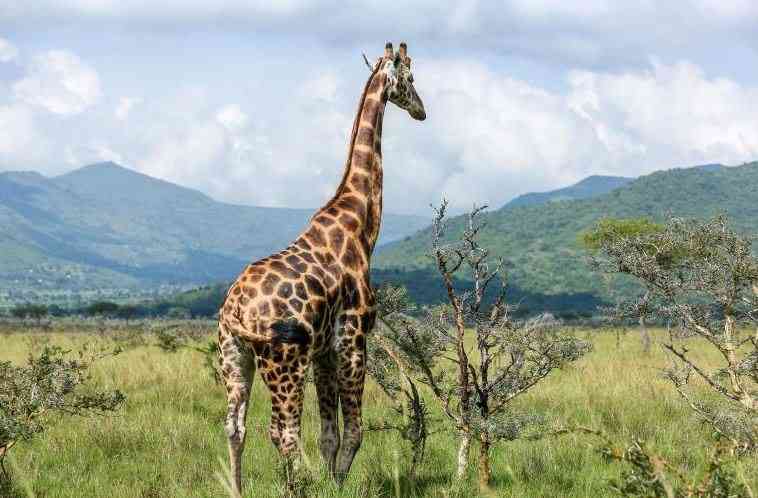
Recently I took a flight to Kisumu, followed by a road trip to Homa Bay County for a visit to Ruma National Park. I was enthusiastic about this adventure as it was different from those that I had undertaken - to experience what it takes to protect and save endangered species outside of the commonly known rhino, lion, and elephant - the roan antelope. From my brief by Chris Khamasi, M-Pesa Foundation, the firm that is supporting the initiative to save the antelope, I learnt the antelope that once roamed the plains of East Africa is only found at Ruma National Park, Lambwe Valley, Homabay.
Homa Bay, unlike most of the country, has experienced rain throughout the last year; the countryside is a beautiful carpet of green vegetation, and farms are dotted with crops such as maize. It is a wet day, and I notice that it can be challenging to visit the park during the rainy season. As we drive, we face a few hitches "sailing" through some sections of the road to the park. Fortunately, our four-wheel drive vehicle was up to the challenge. At the park, we are received by Titus Mitau, Senior Warden, Ruma Park, who introduces us to the special team overseeing the initiative to save the endangered roan antelope.
"The roan antelopes were many in the 1960s and were to be found in Lambwe valley, the Mara, and Tanzania, but due to poaching and issues of predators, the numbers decreased to only 19 at the time of the initiative to save them after they were classified as endangered species," says Mitau.
However, in 2000, says the warden, it was necessary to put in initiatives to protect the roan antelope, to manage the numbers. Through a partnership with M-Pesa Foundation, an 8.6 predator-prove sanctuary has been constructed to ensure that the animals can multiply without being predated or poached. The foundation also supports community initiatives such as the provision of water and employment of the locals to create awareness of the need to protect the roan antelope, a key attraction to visitors and tourists. At the time of constructing the sanctuary, only 13 roan antelopes were within Ruma Park, but within two years, the population grew to 28. Others were brought in from other areas to breed a good mixture of the local breed that would adapt to the local environment.
After the briefing, we were ready to visit the sanctuary, which we found, highly guarded and keenly monitored. The shy antelopes were grazing freely on the well-manicured grass, whose growth level was closely monitored to ensure that the antelope had a good supply of food all year round.
Ruma is remote, but beautiful - a hidden gem in southwest Kenya, located deep in the Kanyamwa escarpment. As we wade our way into the park, right after entering the main gate, I fell in love with the terrain - a classic image of a land of rolling Savannah dotted with picturesque acacias against a backdrop of dramatic hills.
The park has reasonable wildlife species - zebras, dik-diks, a variety of antelopes including the endangered roan antelope, African and Rothschild giraffes, buffalo, black rhino, and ostrich, among others. It is not overcrowded like the Mara, Tsavo East, Tsavo West, or Amboseli. It is also a haven of many bird species for the ardent birder and has great views - rolling hills and vast landscapes. The bird life is excellent, including the highly endangered blue swallow, which I did not manage to see.
On this visit, I saw antelopes, giraffes, rhinos, baboons, zebras, and a host of varieties of birds and butterflies. You need to arrive early to see animals in the morning or late in the evening. It certainly is not teeming with wildlife life like the Mara, so you have to work at spotting it, which makes it more fun.
There are no elephants or lions but there are many other things to see including rhinos, and leopards - I was not lucky to sight one on this visit, but I had a magical and fun day out with buffalo, giraffes (Rothschild and Masai), zebra, impala, and of course the very rare roan antelope. The park is located in Western Kenya, close to the shores of Africa's largest inland lake, Lake Victoria. The park is considered the last retreat and the sanctuary of the endangered and threatened roan antelope, which is considered one of Africa's rarest antelopes.
The park was established in 1966 to protect its indigenous population of rare roan antelope. It acquired national park status in 1993 and was renamed Ruma National Park at the request of the local community in honour of one of the powerful and revered Gor Mahia who was living high on the hill, which now forms part of the Kanyamwa Escarpment.
 The Standard Group Plc is a multi-media organization with investments in media
platforms spanning newspaper print
operations, television, radio broadcasting, digital and online services. The
Standard Group is recognized as a
leading multi-media house in Kenya with a key influence in matters of national and
international interest.
The Standard Group Plc is a multi-media organization with investments in media
platforms spanning newspaper print
operations, television, radio broadcasting, digital and online services. The
Standard Group is recognized as a
leading multi-media house in Kenya with a key influence in matters of national and
international interest.



